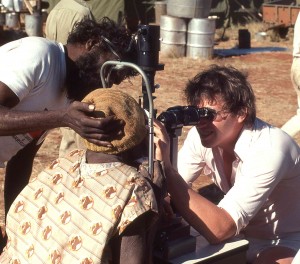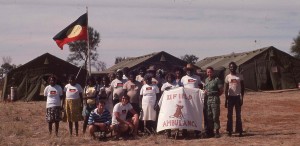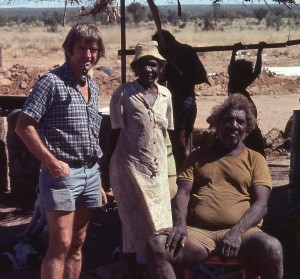THE DOCUMENTARY
- June 7th, 2010
- Write comment
Trachoma is an easily preventable eye disease that can often cause blindness. It was eliminated from mainstream Australia a century ago; however, it remains prevalent among Australia’s remote Indigenous communities.
By the 1970’s, Australia had officially become the only developed nation to still have recorded cases of trachoma. Appalled by the poor health conditions of Indigenous Australians, Prof Fred Hollows helped form the National Trachoma and Eye Health Program (NTEHP). The program gathered hundreds of Indigenous people, eye doctors, surgeons and health workers, and from 1976 to 1978 covered over 84,000 kilometers, visited 465 communities and screened more than 62,000 people across Australia.
The program discovered that one in two Indigenous Australians had trachoma – as high as in any ‘third world’ country. The NTEHP soon made significant progress in reducing the rates of trachoma and improving Indigenous eye health overall.
However, when the program ended, funding shortfalls meant that the responsibility of containing, treating and monitoring trachoma fell to already overburdened local health clinics.
Over the subsequent years, the presence of trachoma returned to the levels first seen in the 1970’s. Meanwhile, around the world, trachoma was eliminated from developing countries – like Iran, Oman and Morocco.
In 2009, a new survey, headed by Prof Hugh Taylor, an original member of the NTEHP program, found levels of trachoma high enough for the Australian government to step in and take action. Over $58 million was set aside to target Aboriginal eye and ear health. Of this, $16 million was set aside for trachoma.
Suddenly the target of eradicating trachoma appears within reach. We follow a new team of health professionals as they head to the front line, and speak with members of the original NTEHP team about their memories of the program from the 70’s. As the campaign unfolds there will be inevitable obstacles, but the future looks more promising for communities struggling with this blinding disease.

This story will be an example of Indigenous and non-Indigenous people coming together to fight a common goal and create lasting change in a nation that no longer wants to be accused of turning a blind eye.
What do we hope to achieve?
Turning a Blind Eye will be a positive story about people working together to overcome seemingly insurmountable odds. Past and present efforts to address trachoma will be documented – highlighting the perseverance and determination of Indigenous and non-Indigenous characters as they tackle this important eye health issue.
Preview some footage below.

